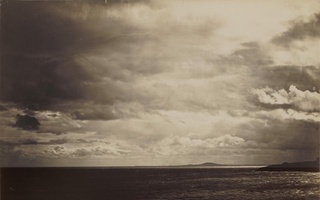Art has a remarkable ability to beautify even the bleakest of urban and professional settings. Nowhere is this more evident than in the Holyoke Center, where a series of prints redefines the otherwise drab space occupied by the southern elevator foyer. The university has filled the alcove with an exhibition of photographs by Harvard Law School Professor emeritus Henry Steiner, on display until September 23. While the title “From Film to Digital: Fresh Images Over Decades” may give false promise of an innovative look at the new age of digital photography, it still proves to be a thought-provoking exhibition.
Seven years ago, Steiner embraced the changes in the photographic world and switched from film to digital. This transition, perhaps a significant one in light of the exhibition’s title, is nevertheless completely glossed over therein. “From Film to Digital” features a selection of 26 of Steiner’s prints spanning four decades and six continents. But these photos are explained only by printout labels with little more information than the title of the piece and the location of the shot, leaving a void where one might expect to find some rationale for featuring these works under this heading.
Sprawling landscapes and faces from across the world are hardly anything innovative in the photographic world. Instead, the depth of the exhibition comes from the implicit connection between the prints and Steiner’s professional work with human rights activism. The photographs aren’t the stock shots of the starving and desolate women and children one might expect from the founder of Harvard Law School Human Rights Program; but instead they offer a subtler look at the beauty and diversity of the earth’s landscapes and its inhabitants.
The selections in the exhibition can be divided into two general categories: landscapes and portraits. Emphasizing the designs and patterns found in nature and light, many of the landscape photographs feature stunning vistas that feel strangely geometrical given the organic nature of the subjects. At first glance, “Fields and Diagonals, Umbria, Italy” simply looks like blocks and stripes of rich vibrant colors. Only upon closer examination do the rolling fields of Italy reveal themselves.
Faces from around the world punctuate the display of scenic terrains, giving the geometric landscapes a human side and situating them within a larger context. An old Cretan woman framed in her yellow doorway stands alone observing a campaign speech. Young boys solemnly look at the camera while apprenticing at a monastery in central Bhutan. In the village of west Hanoi children poke fun at the camera, while somewhere in the outskirts of Kamapala, Uganda, a mysterious woman stares intensely at its lens.
The colorful aerial shot of nearly nude tanners on Copacabana Beach in Rio de Janeiro juxtaposed with the sea of headscarves on young Muslim school girls in Cairo, Egypt drives home the incredible diversity of beauty found across the continents.
While the exhibition might be poorly named, it still has much to offer. Rather than becoming an argument over photographic methods, “From Film to Digital” examines a deeper topic and gives dignity to people that are often forgotten or objectified. The prints might not be the most novel, but they are certainly well captured and visually appealing. Positioned in an easily accessible space that many pass daily, the prints are worth a small detour, if only to provide a moment of reflection on the diversity of the world at large. —Staff writer Erika P. Pierson can be reached at epierson@fas.harvard.edu.
Read more in Arts
'Ash' is Dust on the PageRecommended Articles
-
Durer is in the DetailsLast year's swarm of millennial retrospectives put a peculiar emphasis on Gutenberg's invention of moveable type, as if it prefigured
-
Rearrange Your Dorm Room: Inspiration from a Small, Black Room at the FoggBuilding Representation: Photography and Architecture, Contemporary Interactions Fogg Art Museum Through April 11, 1998 So you're in the mood to
-
Photography Beyond PortraiturePhotographer Berenice Abbott engages in a broader form of portraiture, capturing the various idiosyncrasies of her subjects while preserving her own distinctive artistic style.
-
Sackler Honors the Scientific Artists of the RenaissanceLeonardo da Vinci famously mastered both art and science, blending them in some of his greatest innovations—but he was far ...
-
Students Hit the Sackler After HoursHAMUC harnessed Halloween to promote the Sackler’s new exhibit in a lighthearted event.
-
 MFA Sheds “Sunlight” On Early Photos
MFA Sheds “Sunlight” On Early Photos













